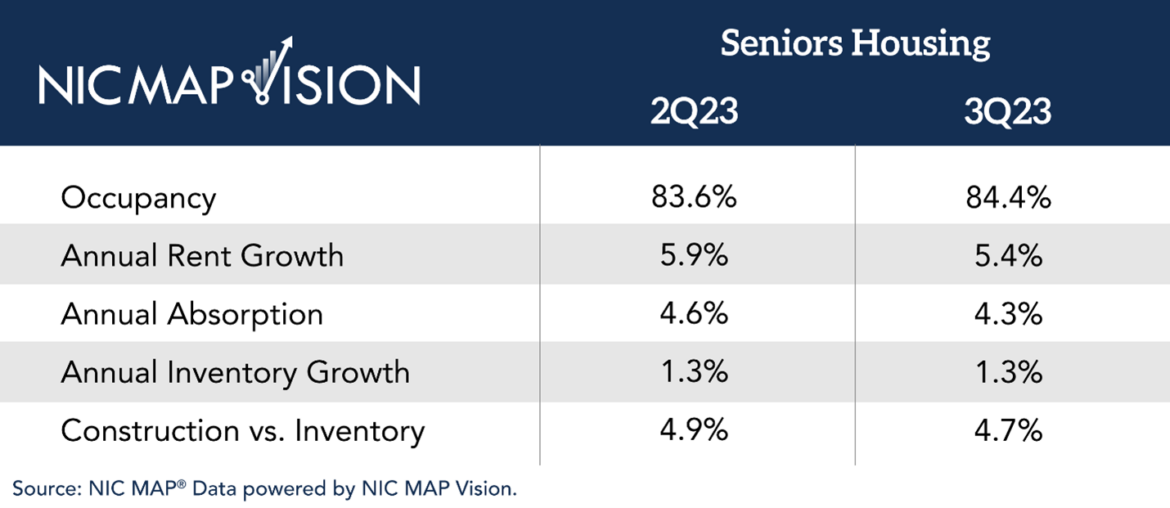ANNAPOLIS, Md. — The occupancy rate for private-pay seniors housing rose 80 basis points to 84.4 percent in the second quarter of 2023, according to data from NIC MAP Vision. It’s the ninth consecutive quarterly increase in occupancy as the industry continues to recover from impacts of the COVID-19 pandemic.
The occupancy figure marks an increase of 660 basis points from the pandemic low of 77.8 percent in second-quarter 2021, but still short of the pre-pandemic mark of 87.1 percent in first-quarter 2020.
NIC MAP Vision is a product of the National Investment Center for Seniors Housing & Care (NIC), an Annapolis-based nonprofit firm that tracks industry data gathered from 31 primary metropolitan markets. Private-pay seniors housing comprises independent living, assisted living and memory care.
“Several consecutive quarters of especially strong demand suggest that the need for the care and housing provided by seniors housing is recognized,” says Chuck Harry, NIC’s chief operating officer. “If demand and supply trends continue at their current pace, seniors housing occupancy will recover during 2024.”
Demand outpaced supply in both assisted living and independent living properties, but assisted living properties continued to recover faster than independent living. The assisted living occupancy rate within the NIC MAP Primary Markets improved 90 basis points from the prior quarter to 82.6 percent, while the independent living occupancy rate improved 70 basis points to 86.1 percent. Occupancy within assisted living properties from NIC MAP Secondary Markets has fully recovered, with the rate 10 basis points above the pre-pandemic level of 84.2 percent.
Tight financing continues to influence seniors housing inventory growth and new construction. Inventory grew by 0.4 percent or 2,806 units from the prior quarter. Year-over-year inventory growth was 1.3 percent, near its smallest year-over-year increase since 2012. The number of seniors housing units under construction relative to the total existing senior housing inventory was 4.7 percent, down 300 basis points from the time series high of 7.7 percent recorded in the fourth quarter of 2019 and the lowest since 2014.
Despite the strong demand, there are still 109,358 unoccupied units in the NIC MAP Primary Markets and 32,722 units under construction.
“The story of the past several quarters has been strong demand and slow inventory growth, but a significant number of units remains unoccupied,” says Caroline Clapp, NIC’s senior principal. “Seniors housing and care operators are well positioned to meet the needs of older adults who increasingly need these services.”
To view the full report, click here.

